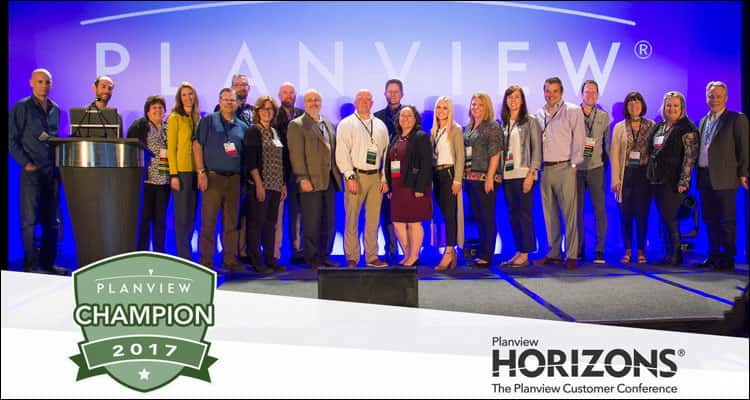
In 2013, American Airlines merged with US Airways creating a “new” American,, the world’s largest airline. This new airline had 120,000 employees and was facing a big overlap in technology, programs, and processes.
In a recent webcast, The Journey to the New American Airlines, Woody Green, manager of IT Finance at American Airlines, goes in-depth with Carina Hatfield of Planview on how the airline pulled off a successful merger to not only gain competitive market share but go beyond the project level and deliver insights into broader divisional and global priorities.
Having to rationalize 1,400 systems and applications was no walk in the park, especially when it involved merging high-profile frequent flyer programs and passenger reservation systems. The new airline was facing a rigid integration schedule when it came to putting 3,000 IT resources to work on 2,000-plus IT system integration projects.
How did they use Planview Enterprise to get there? Here’s three key takeaways from the engaging on-demand webcast:
- Time Entry – To understand how key IT resources were spending their time, the airline began using Planview Enterprise for time entry in 2015. They overcame initial resistance by issuing Time Entry Progress Reports to all IT leaders to improve compliance. In five months, they went from 50 percent to 96 percent compliant. The benefits have been huge – they gained visibility into what key resources are working on and how to better position teams from a capitalization standpoint. Time entry also allows for better project monitoring, provides evidence for resource requests, and helps American Airlines forecast IT labor capitalization.
- Resource Management – When it came to knowing whether they had sufficient IT resources to meet forecasted future work, the airline began using Planview Enterprise for Resource Management. By gaining visibility into upcoming integration projects, they could answer the age-old supply and demand question: do we have enough resources to deliver on forecasted work? Thus, they now have visibility directionally into resource constraints and the information to facilitate discussions on how to resolve any issues by pushing out or re-prioritizing work.
- Investment and Capacity Planning – To get a grasp of how many projects they could handle and whether their current resources were sufficient for high-demand, high-priority work, American Airlines began sizing projects in Planview Enterprise. The projects were then exported to their business units for sorting and ranking. With Investment and Capacity Planning, the airline now has an additional layer of detail they can drill into, making it easier to see every new role required to deliver a project. Using Investment and Capacity Planning means they can also see what is required to resolve any resource constraints, such as shifting project start dates or adding incremental resources to deliver new projects.
“We went from capitalizing 10 percent of our IT labor to 20 percent, resulting in a net positive impact on our balance sheet.”
Today, you’ll find IT leaders at American Airlines no longer work in silos and are more engaged in validating and resolving constraints so they can move forward with a more efficient roadmap. There’s a lot to learn from this amazing story. I invite you to watch the on-demand webcast for best practices and unique insights.
I’d like to hear from you. What did you think about the American Airlines story? Are you facing similar merger challenges? Share by leaving a comment below.





